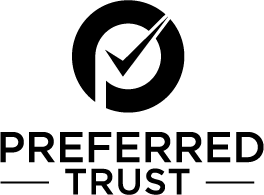INVEST TAX FREE
Using a self-directed IRA to invest in trust deeds is an excellent way to grow your retirement savings while enjoying significant tax advantages. With this strategy, the interest earned from trust deed investments accrues within the IRA, allowing you to defer taxes or avoid them altogether, depending on the type of IRA (Traditional or Roth). This means your returns compound more effectively, maximizing the growth of your portfolio. At Ignite Funding, 75% of our clients leverage this strategy and love it for its ability to provide steady, passive income, while aligning with their long-term financial goals. It’s a smart way to diversify your investments and secure a more robust retirement.
Compare the facts and Make Your Choice
Standard Cash Investment
$10,000 Annualized Profit Example
$100,000 invested in TD investments per year
at $10,000 Gross Profit
Gross Profit
$10,000
Income Tax (24% tax bracket)
$2,400
Net Income
$7,600
SDIRA Funds Investment
$10,000 Annualized Profit Example
$100,000 invested in TD investments per year
at $10,000 Gross Profit
Gross Profit
$10,000
Income Tax (24% tax bracket)
$0
Standard Cash Investment
$10,000
INVEST TAX FREE
Using a self-directed IRA to invest in trust deeds is an excellent way to grow your retirement savings while enjoying significant tax advantages. With this strategy, the interest earned from trust deed investments accrues within the IRA, allowing you to defer taxes or avoid them altogether, depending on the type of IRA (Traditional or Roth). This means your returns compound more effectively, maximizing the growth of your portfolio. At Ignite Funding, 75% of our clients leverage this strategy and love it for its ability to provide steady, passive income, while aligning with their long-term financial goals. It’s a smart way to diversify your investments and secure a more robust retirement.
Compare the facts and Make Your Choice
Standard Cash Investment
$10,000 Annualized Profit Example
$100,000 invested in TD investments per year
at $10,000 Gross Profit
Gross Profit
$10,000
Income Tax (24% tax bracket)
$2,400
Net Income
$7,600
SDIRA Funds Investment
$10,000 Annualized Profit Example
$100,000 invested in TD investments per year
at $10,000 Gross Profit
Gross Profit
$10,000
Income Tax (24% tax bracket)
$0
Standard Cash Investment
$10,000
CHECKOUT THE NUMBERS
Download our whitepaper “BUILDING up vs. Drawing Down:
An Income STRATEGY”

GET STARTED NOW
Using a self-directed IRA to invest in trust deeds is an excellent way to grow your retirement savings while enjoying significant tax advantages. With this strategy, the interest earned from trust deed investments accrues within the IRA, allowing you to defer taxes or avoid them altogether, depending on the type of IRA (Traditional or Roth). This means your returns compound more effectively, maximizing the growth of your portfolio. At our Ignite Funding, 75% of our clients leverage this strategy and love it for its ability to provide steady, passive income while aligning with their long-term financial goals. It’s a smart way to diversify your investments and secure a more robust retirement.
ADVANTAGES OF SELF-DIRECTED IRAS
DIVERSIFICATION
Diversifying your retirement portfolio is a smart investment strategy that can reduce risk, enhance stability, and improve returns. Alternative assets have the potential to outperform traditional assets like stocks, bonds, and mutual funds, and with a low correlation to traditional investments, can act as a powerful buffer during market downturns.
TAX-DEFERRED OR TAX-FREE INCOME
Investment gains and income generated within the self-directed IRA can be tax-free (Roth IRA) or tax-deferred (Traditional IRA). Because a self-directed IRA claims 100% of the income generated by the investments in the account, your retirement funds can grow without restriction.
A self-directed IRA permits tax-free withdrawals of contributions, interest, and earnings after the age of 59 ½.
OFFSET HIGHER TAX RATES
Consult your tax professional about the possibility of reducing your taxable income based on your filing status and income.
2025 Traditional IRA Maximum Annual Contribution Limit – under 50 years $7,000, over 50 years: $8,000.
2025 Roth IRA Maximum Annual Contribution Limit – under 50 years $7,000, over 50 years $8,000.
2025 SEP IRA Maximum Annual Contribution Limit – lesser of $70,000 or 25% of compensation.
IRA allows all taxpayers under 73 years to contribute to an IRA.
If you file a joint return, both you and your spouse can make IRA contributions, even if only one of you has taxable compensation. The amount of your combined contributions can’t be more than the taxable compensation reported on the joint return, regardless of which spouse earned the compensation. If neither spouse participated in a retirement plan at work, all contributions may be deductible.
You can contribute to a traditional or Roth IRA whether or not you participate in another retirement plan through your employer or business. However, you may not be able to deduct all of your traditional IRA contributions if you or your spouse participates in another retirement plan at work. (Roth IRA contributions may be limited based on income level.)
Consult with a qualified CPA or tax specialist to verify your maximum contribution limits. You can also find additional details here, in IRS Publications 560 and 590.
ASSET PROTECTION
Under US Bankruptcy law, self-directed IRA assets are exempt from bankruptcy in amounts up to $1,000,000.
BUILD FOR YOUR BENEFICIARIES
Certain self-directed IRAs allow the passing of assets to beneficiaries after death, with little or no tax liability.
Properly designating your beneficiary can be an important part of your lifetime plan. Without this designation, your heirs may be subject more income and estate taxes than necessary.
Beneficiary Options:
- The most common beneficiary designations are spouses, children, grandchildren, or other relatives.
- A trust, charity, or combination of individuals can also be named.
- Multiple individuals can be named as beneficiaries however additional rules apply as to how the required minimum distribution is determined.
- Name a Living Trust. When you name a living trust as either a primary or contingent beneficiary, work with a professional to ensure the trust agreement is established properly to make certain you have the most advantageous tax results.
- Name a contingent beneficiary should your primary beneficiary predecease you. Without a designated beneficiary your IRA could go into probate and produce unfavorable tax results for your loved ones.
ADVANTAGES OF SELF-DIRECTED IRAS
DIVERSIFICATION
Diversifying your retirement portfolio is a smart investment strategy that can reduce risk, enhance stability, and improve returns. Alternative assets have the potential to outperform traditional assets like stocks, bonds, and mutual funds, and with a low correlation to traditional investments, can act as a powerful buffer during market downturns.
TAX-DEFERRED OR TAX-FREE INCOME
Investment gains and income generated within the self-directed IRA can be tax-free (Roth IRA) or tax-deferred (Traditional IRA). Because a self-directed IRA claims 100% of the income generated by the investments in the account, your retirement funds can grow without restriction.
A self-directed IRA permits tax-free withdrawals of contributions, interest, and earnings after the age of 59 ½.
OFFSET HIGHER TAX RATES
Consult your tax professional about the possibility of reducing your taxable income based on your filing status and income.
2025 Traditional IRA Maximum Annual Contribution Limit – under 50 years $7,000, over 50 years: $8,000.
2025 Roth IRA Maximum Annual Contribution Limit – under 50 years $7,000, over 50 years $8,000.
2025 SEP IRA Maximum Annual Contribution Limit – lesser of $70,000 or 25% of compensation.
IRA allows all taxpayers under 73 years to contribute to an IRA.
If you file a joint return, both you and your spouse can make IRA contributions, even if only one of you has taxable compensation. The amount of your combined contributions can’t be more than the taxable compensation reported on the joint return, regardless of which spouse earned the compensation. If neither spouse participated in a retirement plan at work, all contributions may be deductible.
You can contribute to a traditional or Roth IRA whether or not you participate in another retirement plan through your employer or business. However, you may not be able to deduct all of your traditional IRA contributions if you or your spouse participates in another retirement plan at work. (Roth IRA contributions may be limited based on income level.)
Consult with a qualified CPA or tax specialist to verify your maximum contribution limits. You can also find additional details here, in IRS Publications 560 and 590.
ASSET PROTECTION
Under US Bankruptcy law, self-directed IRA assets are exempt from bankruptcy in amounts up to $1,000,000.
BUILD FOR YOUR BENEFICIARIES
Certain self-directed IRAs allow the passing of assets to beneficiaries after death, with little or no tax liability.
Properly designating your beneficiary can be an important part of your lifetime plan. Without this designation, your heirs may be subject more income and estate taxes than necessary.
Beneficiary Options:
- The most common beneficiary designations are spouses, children, grandchildren, or other relatives.
- A trust, charity, or combination of individuals can also be named.
- Multiple individuals can be named as beneficiaries however additional rules apply as to how the required minimum distribution is determined.
- Name a Living Trust. When you name a living trust as either a primary or contingent beneficiary, work with a professional to ensure the trust agreement is established properly to make certain you have the most advantageous tax results.
- Name a contingent beneficiary should your primary beneficiary predecease you. Without a designated beneficiary your IRA could go into probate and produce unfavorable tax results for your loved ones.
THE IRA INVESTMENT PROCESS AT IGNITE

OPEN IRA ACCOUNT
Determine which type of IRA account to open: Traditional, ROTH, SEP or SIMPLE. Complete the online application with the Custodian

FUND YOUR ACCOUNT
Determine how you will fund your IRA account. Options include rolling over an IRA from a previous employer, transferring from another IRA or making a contribution. Work with Custodian to implement.

SELECT INVESTMENT
Open an account with Ignite Funding. Select an Investment that you would like to hold within your IRA and complete the investment documentation.

RECEIVE
INCOME
Enjoy the benefit of an IRA: receiving the income from your investments directly into your IRA tax-free or tax-deferred.
THE IRA INVESTMENT PROCESS AT IGNITE

OPEN IRA ACCOUNT
Determine which type of IRA account to open: Traditional, ROTH, SEP or SIMPLE. Complete the online application with the Custodian

FUND YOUR ACCOUNT
Determine how you will fund your IRA account. Options include rolling over an IRA from a previous employer, transferring from another IRA or making a contribution. Work with Custodian to implement.

SELECT INVESTMENT
Open an account with Ignite Funding. Select an Investment that you would like to hold within your IRA and complete the investment documentation.

RECEIVE
INCOME
Enjoy the benefit of an IRA: receiving the income from your investments directly into your IRA tax-free or tax-deferred.
Open Your Account With Preferred Trust Company Today!
Open Your Account With Preferred Trust Company Today!
Ignite Funding, LLC | 6700 Via Austi Parkway, Suite 300, Las Vegas, NV 89119 | P 702.739.9053 | M 702.919.4281 | F 702.922.6700 | NVMBL #311 | AZ CMB-0932150 | Money invested through a mortgage broker is not guaranteed to earn any interest and is not insured. Prior to investing, investors must be provided applicable disclosure documents.
© 2025 Ignite Funding. All rights reserved
Ignite Funding, LLC | 6700 Via Austi Parkway, Suite 300, Las Vegas, NV 89119 | P 702.739.9053 | M 702.919.4281 | F 702.922.6700 | NVMBL #311 | AZ CMB-0932150 | Money invested through a mortgage broker is not guaranteed to earn any interest and is not insured. Prior to investing, investors must be provided applicable disclosure documents.
© 2025 Ignite Funding. All rights reserved


